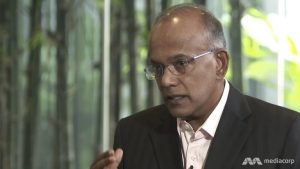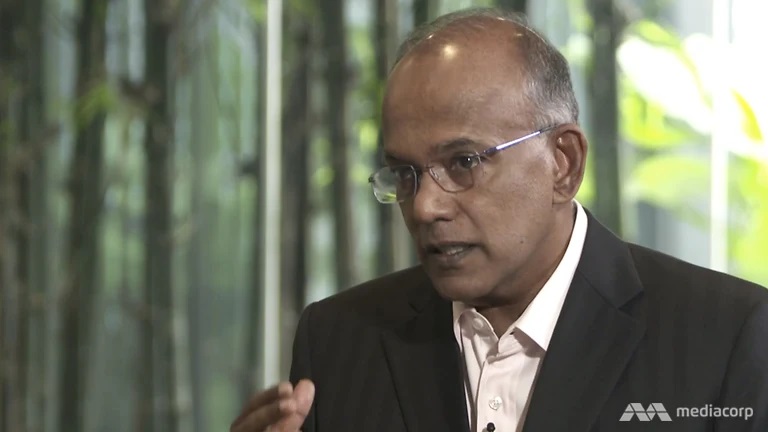
Minister for Law and Home Affairs K Shanmugam speaking on In Conversation Special.
SINGAPORE: Singaporeans have to “calibrate” and “carry on with economic activity” even though the risks are higher in Phase 2 of Singapore’s reopening, said Minister for Law and Home Affairs K Shanmugam.
He was speaking to host Diana Ser in the first of three special episodes of In Conversation.
“The key thing is to tell people that if we take sufficient measures and if each one of us treats ourselves as a frontliner in this fight and that each one of us bears individual responsibility … we can have a successful Phase 2 and move towards Phase 3,” Mr Shanmugam added.
It was decided that Singapore would go into Phase 2 of its reopening – which began on Jun 19 – following the lifting of the COVID-19 “circuit breaker” as community infection rates “remained generally stable” in Phase 1 despite the increase in workplace activity, said the Ministry of Health.
GOVT CONSIDERS VARIETY OF “VERY DYNAMIC” FACTORS ON WHEN, HOW TO REOPEN
However, infection rates is not the only marker the Government considers when deciding how and when to reopen. There are a variety of “very dynamic” factors to juggle, Mr Shanmugam said.
“Infection rates tell you the kind of situation there is in the community, but you also look at the signs from around the world,” he said.
“You look to see what kind of measures can be put in so that people can try and go about their lives as far as possible while we minimise the risks.”
He also said that the Government had to make sure the senior citizen population was “safeguarded”, as the mortality rate is higher when they contract COVID-19.
Other factors include making sure that the healthcare system is “always ahead of the curve” – where the capacity is higher than the number of people affected – while maintaining decent economic activity, Mr Shanmugam added.
“Have people go about their lives, otherwise the mental health also suffers,” he said.
When asked by Ms Ser on what could have been done differently, Mr Shanmugam said that Singapore’s record on COVID-19 “speaks for itself”.
“First of all, in terms of healthcare, our mortality rates are one of the lowest in the world. We’ve up to today 26 people who have unfortunately passed away,” he said.
“About 3,000-odd community cases and of course, a much larger number of foreign workers, who because of their age just passed through it without even having to be hospitalised.”
He also praised Singapore’s frontline healthcare workers, who have done “an excellent job”.
GOVT WILL DO “WHAT IT TAKES” TO KEEP ECONOMY AFLOAT
In terms of the economy, Mr Shanmugam said that Singapore also moved quickly to provide relief measures.
“The Government has done something that no one would have thought … spend a huge amount of money because this is what we have always said, ‘We save for a rainy day’, and this is a huge rain,” he said.
“It’s a tornado and this is when you have to spend.”
He added that the Government delayed the “closing down” as much as possible, well after other countries.
Mr Shanmugam said the Government will continue to keep the economy and people’s livelihoods going.
Under measures first announced in February’s Budget, the Government co-funds between 25 per cent and 75 per cent of the first S$4,600 of gross monthly wages paid to each local employee.
“Apart from the cost of salaries, rental is a big cost – it’s up to 25 to 30 per cent,” Mr Shanmugam said.
To help small- and medium-sized enterprises (SME) with rental costs, additional rental relief was given to property owners in the form of cash grants that cost about S$2 billion in total.
SME tenants at commercial properties – including retail and food and beverages – are also provided with four months’ worth of rental relief, while those at industrial and office properties get two months.
Despite the measures in place, Mr Shanmugam said it was “not going to be easy” for SMEs, even as economic activities resume.
“No one knows how long this is going to last, how long this is going to take, but we will do what it takes to keep the country and economy afloat and help our people,” he said.



